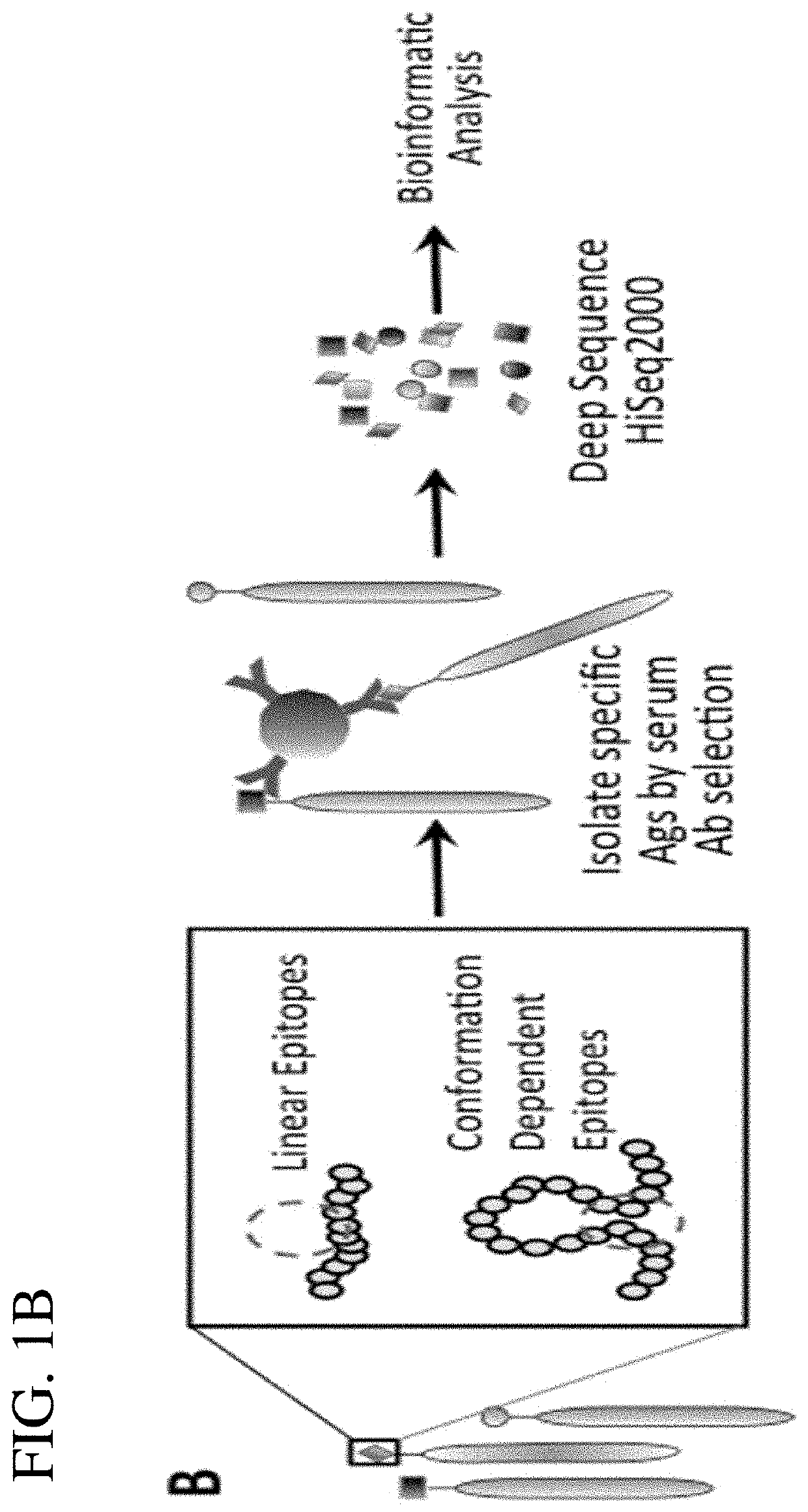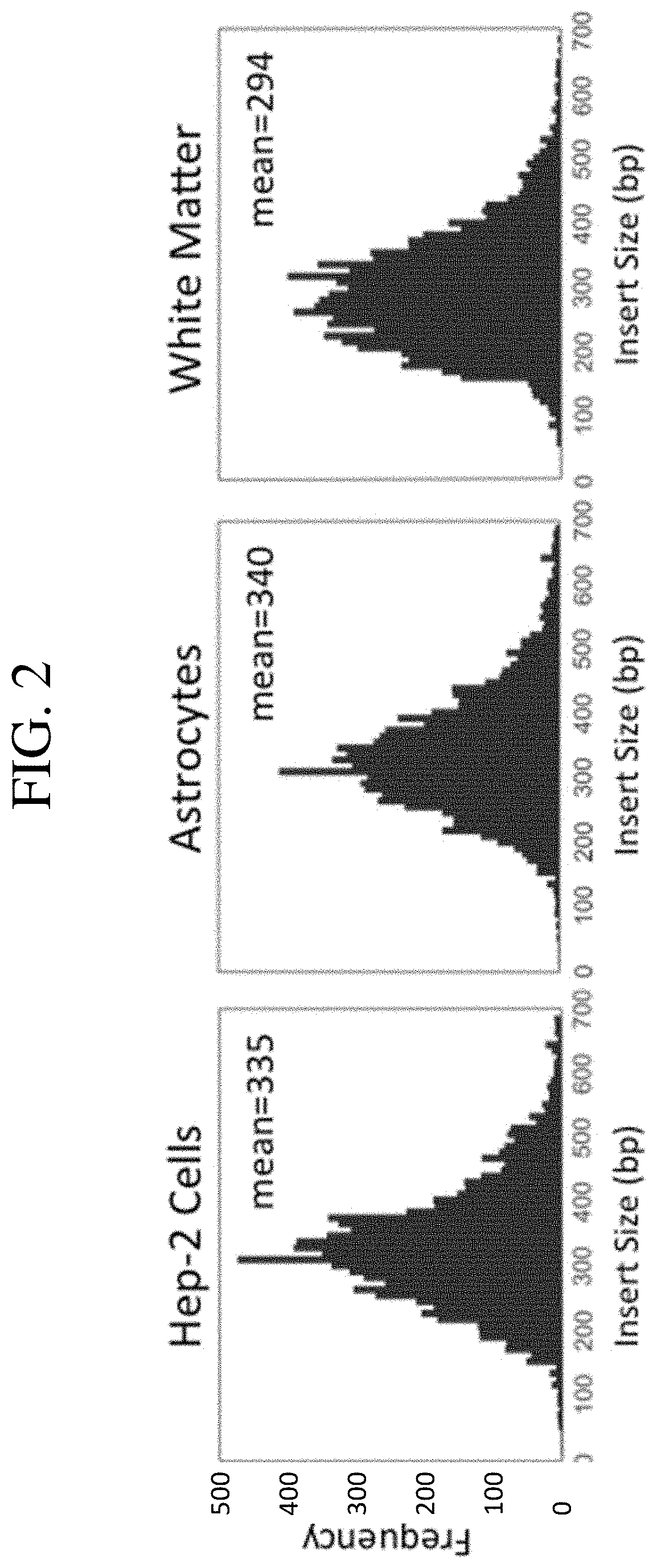Antigen display system and methods for characterizing antibody responses
a technology of antibody response and display system, which is applied in the field of compositions and methods for displaying antigens and characterization of antibodies, to achieve the effect of facilitating the isolation of recombinant cells
- Summary
- Abstract
- Description
- Claims
- Application Information
AI Technical Summary
Benefits of technology
Problems solved by technology
Method used
Image
Examples
example 1
Production of Antigen Display Library
[0057]In one aspect, a method of producing a phage display library for expression and presentation of linear epitopes and conformational epitopes, and its use to characterize antibody responses to the antigens, the method comprises (a) converting mRNA, from a cell type or tissue type, to cDNA using primers with adapters that allow for subsequent directional cloning into a vector; (b) size selecting the cDNA by selecting cDNA in a size range of from about 150 bp to about 900 bp; (c) directionally cloning of the size-selected cDNA as inserts into a plasmid vector comprising a selectable marker (e.g., antibiotic resistance gene, or reporter gene), to allow selection of positively transformed cells when the inserts are in-frame with the selectable marker to facilitate expression of the selectable marker, in forming recombinant vector; (d) transforming recombinant vector into cells; (e) selecting cells carrying recombinant vector with in-frame inserts...
example 2
[0066]This example illustrates the use of the antigen display library, described in Example 1 above, to identify antigenic epitopes recognized by antibodies in a sample from an individual. In the schematic diagram shown in FIG. 1B, illustrated is contacting the phage display library with a sample containing antibody; immunoselection of phage displayed antigen bound by antibody in the sample, wherein the antibody of the antigen-antibody complex is immobilized on a substrate; and deep sequencing the immunoselected phage for determining the cDNA insert that encodes the antigenic epitope recognized by antibody in the sample.
[0067]Aliquots of the pooled phage display library (˜2×1010 infectious particles) were resuspended in PBS and pre-cleared by adding a suspension Protein A-conjugated paramagnetic beads with rotation at 4° C. for at least 1 hour. After centrifugation to pellet the beads, the phage suspension was harvested, with 1 μL of a biological sample containing or suspected of co...
example 3
Antibody Signatures
[0073]This example illustrates the use of the antigen display library to identify antigenic epitopes recognized by antibodies in a sample from an individual (as described in Examples 1 & 2 herein) to generate antibody signatures. Thus, in addition to determining gene products identified by antibodies contained within a sample, the data generated using the current bioinformatics pipeline can also be used for mapping and predicting antibody-binding sites within specific regions, domains, and epitopes (conformational or linear) of the target proteins. This can be achieved over a broad spectrum of resolution down to the amino acid sequence level by using additional analysis procedures. For this purpose, each individual DNA fragment sequenced within the individual libraries was identified by their unique nucleotide start and end positions relative to the reference human genome using a custom Python3 script suite designed and developed for this purpose. This combination...
PUM
| Property | Measurement | Unit |
|---|---|---|
| concentration | aaaaa | aaaaa |
| optical densities | aaaaa | aaaaa |
| concentration | aaaaa | aaaaa |
Abstract
Description
Claims
Application Information
 Login to View More
Login to View More - R&D
- Intellectual Property
- Life Sciences
- Materials
- Tech Scout
- Unparalleled Data Quality
- Higher Quality Content
- 60% Fewer Hallucinations
Browse by: Latest US Patents, China's latest patents, Technical Efficacy Thesaurus, Application Domain, Technology Topic, Popular Technical Reports.
© 2025 PatSnap. All rights reserved.Legal|Privacy policy|Modern Slavery Act Transparency Statement|Sitemap|About US| Contact US: help@patsnap.com



